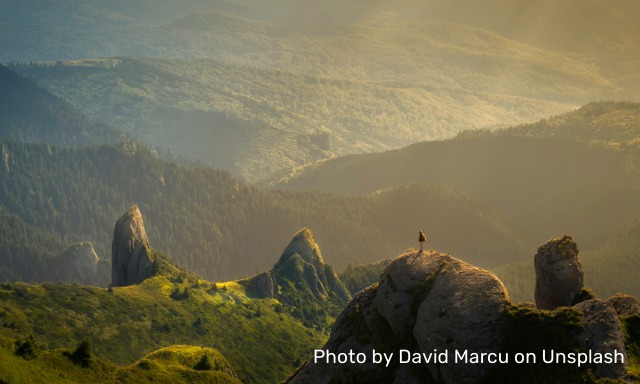- Home /
- Articles /
- Finding My Joy and Hope in Being a Climate Activist
Finding My Joy and Hope in Being a Climate Activist



We have just transitioned into 2023 and because each passing year brings us closer to catastrophic tipping points, it could be easy for us to feel a sense of despair at the lack of progress we are seeing to mitigate climate change. As former Vice President Al Gore so passionately stated at the World Economic Forum earlier this week, “we are still failing badly.”
One of the central tenets of Common Earth is that we need to recognize and address both the systemic structures holding the status quo in place, while simultaneously recognizing the limiting beliefs that each one of us brings to the table.
One of the limiting beliefs that I often find myself grappling with is how I can take meaningful action. As one of now more than 8 billion people on this awe-inspiring planet, how can I influence anything enough to matter? Because as Ayana Elizabeth Johnson says in her hopeful Ted Talk, How to find Joy in Climate Action,
the stakes for humanity are greater than my heart and mind can truly fathom.
When I invariably find myself in this predicament, I return time and again to the two things I have learned by participating in Common Earth, and these are that I can only change the system from within, which requires that I re-evaluate what I think I know.
There are two things I particularly love about this Ted Talk. The first is the elements she includes in her Venn Diagram for helping each one of us identify what climate action we must take, and the second is her emphasis on what she describes as “building the biggest team possible.”
Allow me to explain. The three spheres she includes in her Venn Diagram are:
-
- What work needs doing?
- What are you good at?
- What brings you joy?
I want to look at each of these and share what they mean to me, specifically in the context of what we discuss at Common Earth.
When we are asking ourselves what work needs doing, we must ensure that we aren’t falling into the trap of creating unintended consequences or intuitively pushing the right leverage points in the wrong direction. This means taking the time to understand the system structure and ensure that the work we identify as needing doing is going to ameliorate the situation as opposed to worsen it. In short, we approach this question with lucidity about how the world works to ensure that our contributions are actually needed and not just what we think is needed.
Next, when identifying what we are good at, we must set aside our limiting beliefs and insecurities in order that we might truly embrace our greatness in whatever area we decide to focus on. This is where we hear those voices in our heads telling us that we aren’t good enough, or smart enough, or powerful enough and decide to do it anyway. Or perhaps what is limiting us is the idea that we are doomed no matter what, or that technology will save us. Whatever idea it is that is holding us back must be seen for what it is – and that is that it’s just a thought.
And finally, we must identify what brings us joy. This is so critical because this will not be easy. This will require all of the determination, grit, and resilience we can muster. And finding joy in taking action is the most surefire way I know to sustain us in that commitment.
The second element she points to is that we must each identify our individual climate action by finding the overlap of these three spheres in the Venn Diagram so that we can collectively create a global community of people; each of whom brings their unique gifts to bear – because we need them all.
It is through the diversity of our interests and talents while maintaining a singularity of focus and intention that we will support and inspire one another in our journey to the post-carbon, caring society.
I can think of no one I would rather be joined by on this journey than each of you.
